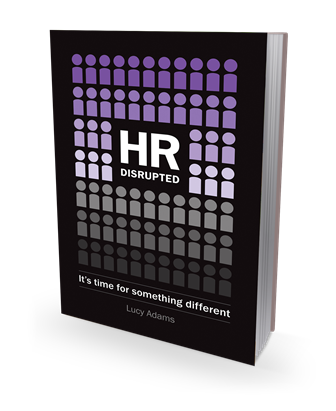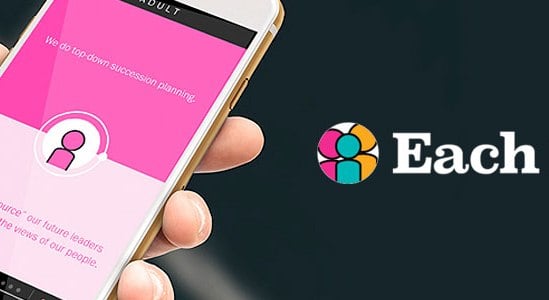We often hear organisations say that their “employees are our greatest assets”. What a horrible phrase. Assets are things like buildings, computer equipment and furniture – not human beings. I appreciate employers usually mean the word ‘asset’ in a positive sense, in that they see their staff as being ‘assets to the organisation’. The trouble with the phrase is that it drives a particular mind-set – one where we tend to view our employees as a homogenous lump rather than as messy, wonderful and mercurial individuals who will respond completely differently to any given set of circumstances. Instead of “assets”, let’s think about our people as if they were “consumers”. The ambitions for HR and consumer marketing are not so very different. We both seek to change perceptions, to change behaviours and to increase brand loyalty. HR can learn a lot from considering how organisations think about and treat their consumers. If we saw our people as if they were consumers, three radical and sequential transformations would take place.
1. We would develop a deeper level of insight into our people.
2. This would encourage us to move away from a one-size-fits-all approach to employees.
3. We would therefore design our HR processes around the users’ particular needs, instead of an established and outmoded notion of what they should be.
Genuine insight, not an annual survey
I am amazed at the insights consumer organisations now have about me as their sophisticated algorithms assess my buying patterns and demographic profile and predict my next likely purchase or tap into my psyche to suggest one I hadn’t even though of yet. What do we have in HR to help us understand our employees? We rely on two sources of data; the “asset register” that contains the base information and is usually linked to a finance system and the annual engagement survey. The former tells us how many we have, where they are located and what they’re costing us. The survey provides us with a sporadic and high level view of their views at a certain period. The survey that we take three months to finalise as departments wrangle over the questions. The survey that is never at “quite the right time” due to re-structures and pay reviews. The survey that we plead, coax and coerce to get a miserable 60% completion rate. The survey that takes another three months to provide us with data that we then argue about as our leaders become statistical experts overnight or is so high level that it’s meaningless. The survey that tells us exactly the same things it tells every company – “we want better comms, better leaders, better pay and better career development”. And let’s not even start on the cascade action plans ….
If we were to think about our employees as consumers then we would do things differently. We would insist on better analysis, better predictive data, better granularity of understanding. We would recognise that surveys can only provide the most superficial of snapshots and we would deploy qualitative research and harness line managers as the means to get to a much richer appreciation of our people. We would obsess about having frequent insights such as one of our clients who sends a simple text message to a sample of their people every week asking them “How is work for you this week?” We would want to know about their learning styles, their preferred ways of working, their unique skill sets. And we would use this information to help us segment and target our HR delivery.
Segmentation
Successful consumer organisations don’t start with themselves, they start with their market. They find out every detail they can about the customers they’re aiming at; this shapes their branding, route to market, pricing, and advertising, so they can tailor what they do to different groups. As consumers, we expect and enjoy a level of customisation based around our specific needs. We can edit our news apps to only get the stories we’re interested in, we take advantage of the algorithms in social media to filter out the noise, we have a level of choice like never before. Many of us in HR make a virtue of the opposite of segmentation. We are proud of the fact that we have applied a one-size-fits-all approach to say, performance management or induction. Virgin Trains is an honourable exception. They asked their market research department how they would go about assessing and segmenting their 3,500 employees. Instead of taking the asset-based approach, which would have meant asking questions such as ‘how many?’ ‘where are they?’ ‘how old are they?’ and ‘what are they costing us?’, they looked at aspects such as social media preferences, traditional media consumption, learning biases, and so on. They called this internal market research the Amazing Colleague Experience, and it went far deeper than any employee engagement survey. All of the rich data was then used to inform the creation of meaningful, employee-driven initiatives.
Whilst for most of us in HR, personalisation or detailed segmentation is out of reach, we could do more to ensure our delivery is tailored to our people’s needs. We would recognise that shoe-horning employees into one size fits all processes can’t possibly work and we would segment and customise our approach based on the nature of the people we’re serving. We would accept that our people are sophisticated, messy and complex entities that need to be engaged in a variety of ways, with multiple channels and with a coherent internal brand that is consistent in terms of its manifestation through HR processes.
Design HR processes around our users, not ourselves
User-centred design is central to how consumer organisations operate. The product or service development process isn’t complete until customers have had their say on it. When Chrysler, for instance, was launching what became dubbed the ‘dashboard of the future’, they buddied their trial customers with local engineers and product designers and as a result identified an almost universal need for a bigger dial on the stereo. Given that the development of this new dashboard was critical for Chrysler’s credibility as a brand, this was an important finding.
And yet HR often develops new processes without involving the very people who’ll be at the receiving end of them. When I arrived at the BBC I was amazed to find many of my team who were responsible for writing policies for people in TV or Radio had never actually visited a production on-site, been to see the news go out, or watched a radio broadcast being put together. I challenged each team member to find a production to visit so we could end this ivory tower approach. One of my staff went to visit the set of Luther, a production on which people worked long hours outdoors with minimal office facilities. She couldn’t believe that only the previous month she’d designed a process in which all new temporary workers had to copy their passport and email it to HR within 24 hours. How were real people on the ground ever going to comply with that?
Treat your employees as ready-made focus groups just waiting to be asked their opinion. The accountancy firm Grant Thornton knew they needed a new travel policy, but they didn’t want to impose it unless it was realistic for everyone to comply with. With that in mind, they put it on their intranet and asked for employees’ views. The feedback from office-based staff was positive, but it was deemed impractical for those on the road. Rather than feeling disheartened, their HR team changed it over the weekend to something more employee friendly.
We can go further than just using our employees as research – we can involve them in the development of an entire process. Adobe wanted to redesign their recruitment experience from the perspective of potential new employees. They broke the process down into how their brand was represented, how easy it was to use, and what impressions the applicants gained of the company every step of the way. Their starting point was what they wanted their users to experience.
HR is increasingly talking about being focused on the employee experience and moving to strength based approaches. These moves are, in my view, good news for the profession and we are already seeing some brilliant examples of this at work. But they will remain little more than the latest HR buzzwords unless we get serious about changing our mind-set. If we are really going to do meaningful work in this disrupted world, then we need to stop seeing our employees as homogenous assets and start thinking about them as consumers.
This blog is the second part in the EACH© series – Employees as Adults, Consumers and Human beings. You can read the rest of the series and other blogs on the latest HR topics here.
If you’d like to check out whether you currently have a consumer approach to your people, why not take our free HR diagnostic?
Why not get our book “HR Disrupted” and find out how to make your HR more consumer focused? Click here to order.

Join the Disruptive HR Club for free and enjoy a taste of our exclusive blogs, podcasts, videos, and live events
Recent Posts
Meet Nana…HR Disruptor and Club pro member!
We caught up with Nana Arkhurst, Director of People and Performance at Demica, a leading fintech, to find out how she is disrupting traditional HR practices.
The third evolution of HR
HR is now in its third evolution. We're moving on from being the nursemaid or process implementer. We're now focused on enabling people to do their best work.
Making time to invest in ourselves
If we are going to be equipped with the HR skills and mindsets we need for the future, then we have to make the time to invest in ourselves. This blog looks at what might be stopping us and how we can make it happen.
